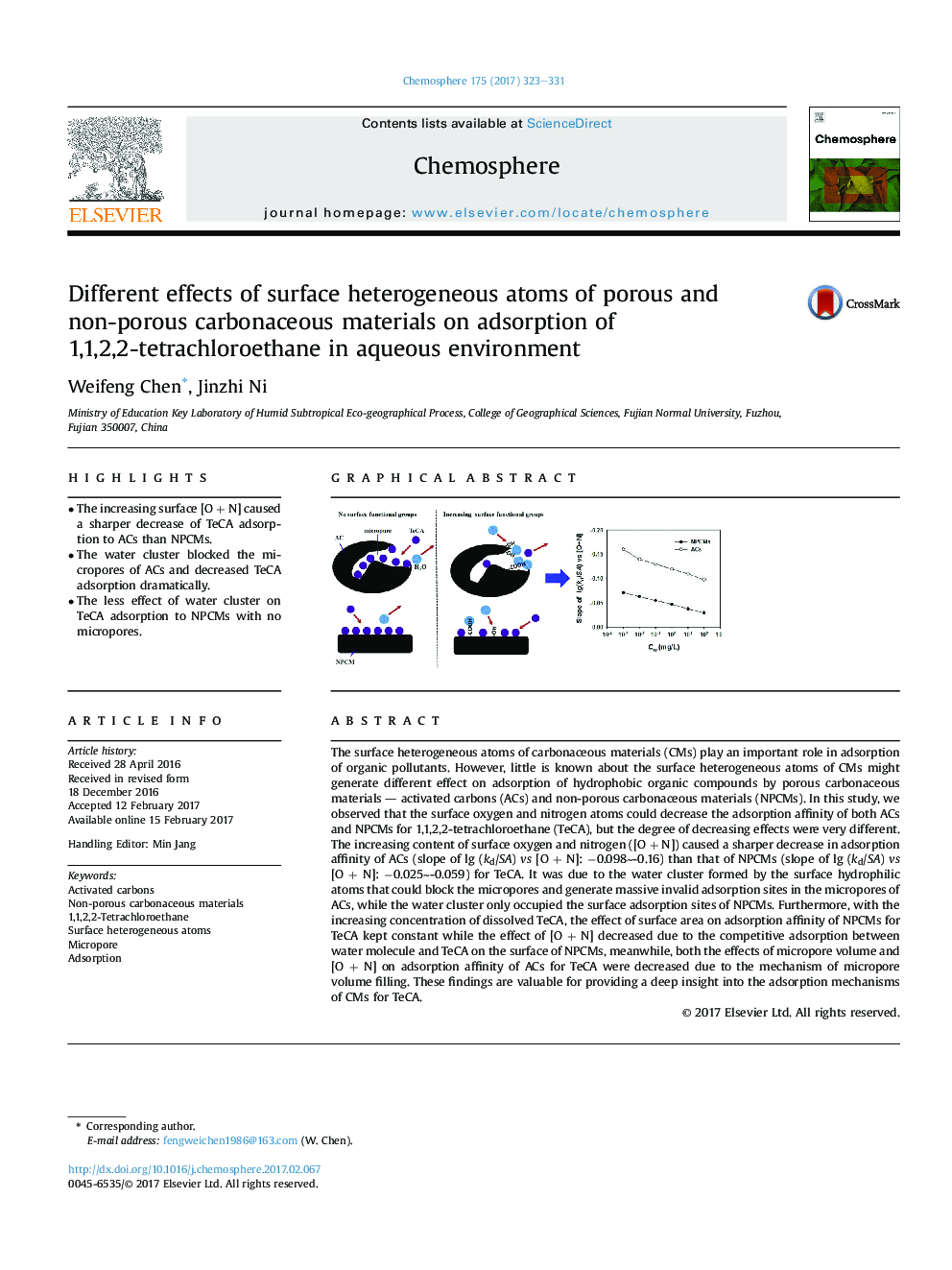| Article ID | Journal | Published Year | Pages | File Type |
|---|---|---|---|---|
| 5746477 | Chemosphere | 2017 | 9 Pages |
â¢The increasing surface [O + N] caused a sharper decrease of TeCA adsorption to ACs than NPCMs.â¢The water cluster blocked the micropores of ACs and decreased TeCA adsorption dramatically.â¢The less effect of water cluster on TeCA adsorption to NPCMs with no micropores.
The surface heterogeneous atoms of carbonaceous materials (CMs) play an important role in adsorption of organic pollutants. However, little is known about the surface heterogeneous atoms of CMs might generate different effect on adsorption of hydrophobic organic compounds by porous carbonaceous materials - activated carbons (ACs) and non-porous carbonaceous materials (NPCMs). In this study, we observed that the surface oxygen and nitrogen atoms could decrease the adsorption affinity of both ACs and NPCMs for 1,1,2,2-tetrachloroethane (TeCA), but the degree of decreasing effects were very different. The increasing content of surface oxygen and nitrogen ([OÂ +Â N]) caused a sharper decrease in adsorption affinity of ACs (slope of lg (kd/SA) vs [OÂ +Â N]:Â â0.098â¼-0.16) than that of NPCMs (slope of lg (kd/SA) vs [OÂ +Â N]:Â â0.025â¼-0.059) for TeCA. It was due to the water cluster formed by the surface hydrophilic atoms that could block the micropores and generate massive invalid adsorption sites in the micropores of ACs, while the water cluster only occupied the surface adsorption sites of NPCMs. Furthermore, with the increasing concentration of dissolved TeCA, the effect of surface area on adsorption affinity of NPCMs for TeCA kept constant while the effect of [OÂ +Â N] decreased due to the competitive adsorption between water molecule and TeCA on the surface of NPCMs, meanwhile, both the effects of micropore volume and [OÂ +Â N] on adsorption affinity of ACs for TeCA were decreased due to the mechanism of micropore volume filling. These findings are valuable for providing a deep insight into the adsorption mechanisms of CMs for TeCA.
Graphical abstractDownload high-res image (197KB)Download full-size image
